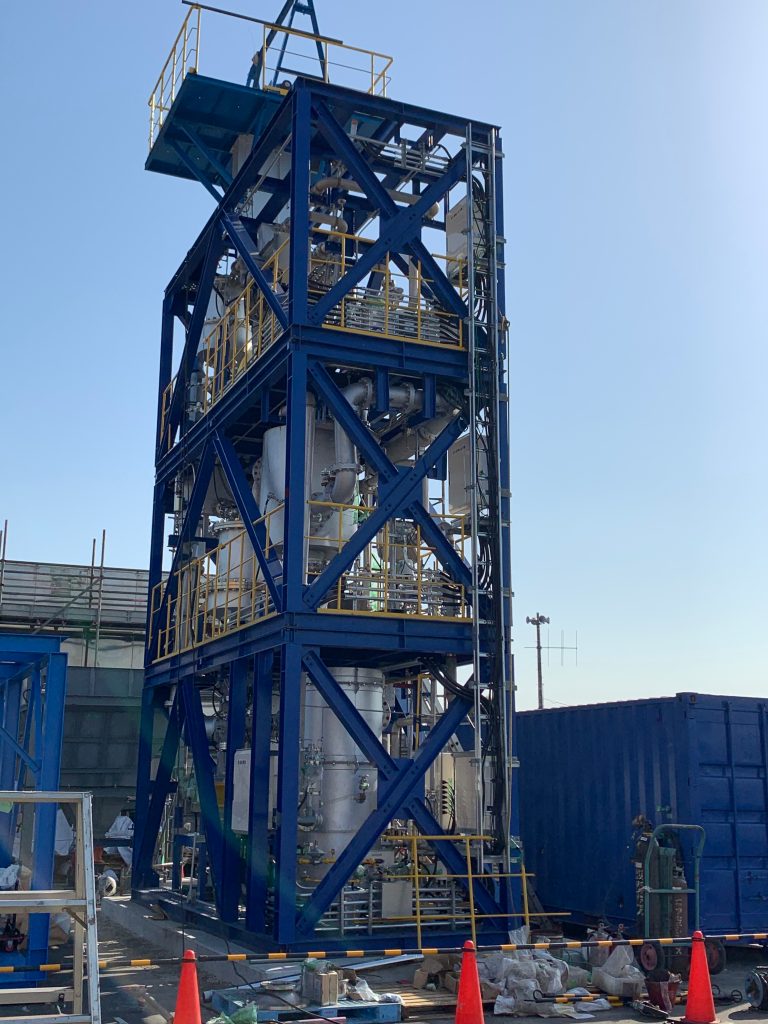
In today’s Electrek Green Energy Brief (EGEB):
- A new facility in Tokyo that converts sewage into renewable hydrogen has been completed.
- US president Joe Biden invites 40 world leaders to the virtual Leaders Summit on Climate in April.
- UnderstandSolar is a free service that links you to top-rated solar installers in your region for personalized solar estimates. Tesla now offers price matching, so it’s important to shop for the best quotes. Click here to learn more and get your quotes. — *ad.
Sewage-to-hydrogen

A waste-to-hydrogen facility at the Sunamachi Water Reclamation Center near Tokyo Bay in Japan, which Electrek covered in October 2020, has now been completed as planned. It will process 1 ton of dried sewage sludge per day to generate 40 to 50 kilograms of hydrogen per day. That’s enough to fuel 10 passenger vehicles or 25 fuel-cell e-bikes.
In addition to wastewater sewage, plastic, paper, municipal solid waste, and other refuse will be heated to a high temperature and converted into a gas, from which pure hydrogen is extracted. The facility is carbon-neutral and generates its own fuel in a closed-loop process.
The project is a collaboration between Japan Blue Energy Co. (JBEC), TODA Corporation, the Tokyo Metropolitan Government, TOKYU Construction, CHIYODA Kenko, and researchers at the Tokyo University of Science. The technology was developed by JBEC and is commercialized worldwide by Ways2H.
With 95% of the world’s hydrogen produced from natural gas and coal, Ways2H and JBEC are working to supply clean hydrogen to replace fossil fuels for mobility and power generation.
Ways2H is a joint venture between US-based Clean Energy Enterprises and JBEC. Ways2H’s CEO Jean-Louis Kindler told Electrek:
Because our waste feedstock is majority renewable, the carbon dioxide that comes out of our system is short-cycle and does not contribute to increasing greenhouse gases in the atmosphere. Waste-to-hydrogen can actually be better than green hydrogen, which is carbon neutral at best. If we connect our solution to a carbon sequestration solution, the whole system becomes carbon negative.
We strongly believe the future of transportation comes through several pathways so that we can transition away from gasoline and diesel. We will definitely have a mix of battery-electric and hydrogen fuel-cell vehicles. Hydrogen will play a major role in transportation.
Leaders Summit on Climate
President Joe Biden has invited 40 world leaders to a virtual Leaders Summit on Climate on April 22 and 23. The start of the summit coincides with Earth Day.
It will be live-streamed for public viewing. By that time, the US will announce a 2030 emissions target as its new Nationally Determined Contribution under the Paris Agreement, and Biden urged other countries to do the same.
The Leaders Summit on Climate will “underscore the urgency and economic benefits of stronger climate action.”
According to the White House website, key themes of the Summit will include:
- Galvanizing efforts by the world’s major economies to reduce emissions during this critical decade to keep a limit to warming of 1.5 degree Celsius within reach.
- Mobilizing public and private sector finance to drive the net-zero transition and to help vulnerable countries cope with climate impacts.
- The economic benefits of climate action, with a strong emphasis on job creation, and the importance of ensuring all communities and workers benefit from the transition to a new clean energy economy.
- Spurring transformational technologies that can help reduce emissions and adapt to climate change, while also creating enormous new economic opportunities and building the industries of the future.
- Showcasing subnational and non-state actors that are committed to green recovery and an equitable vision for limiting warming to 1.5 degree Celsius, and are working closely with national governments to advance ambition and resilience.
- Discussing opportunities to strengthen capacity to protect lives and livelihoods from the impacts of climate change, address the global security challenges posed by climate change and the impact on readiness, and address the role of nature-based solutions in achieving net zero by 2050 goals.
Photo: TODA CORPORATION/Japan Blue Energy Co. Ltd.
Subscribe to Electrek on YouTube for exclusive videos and subscribe to the podcast.
Author: Michelle Lewis
Source: Electrek



